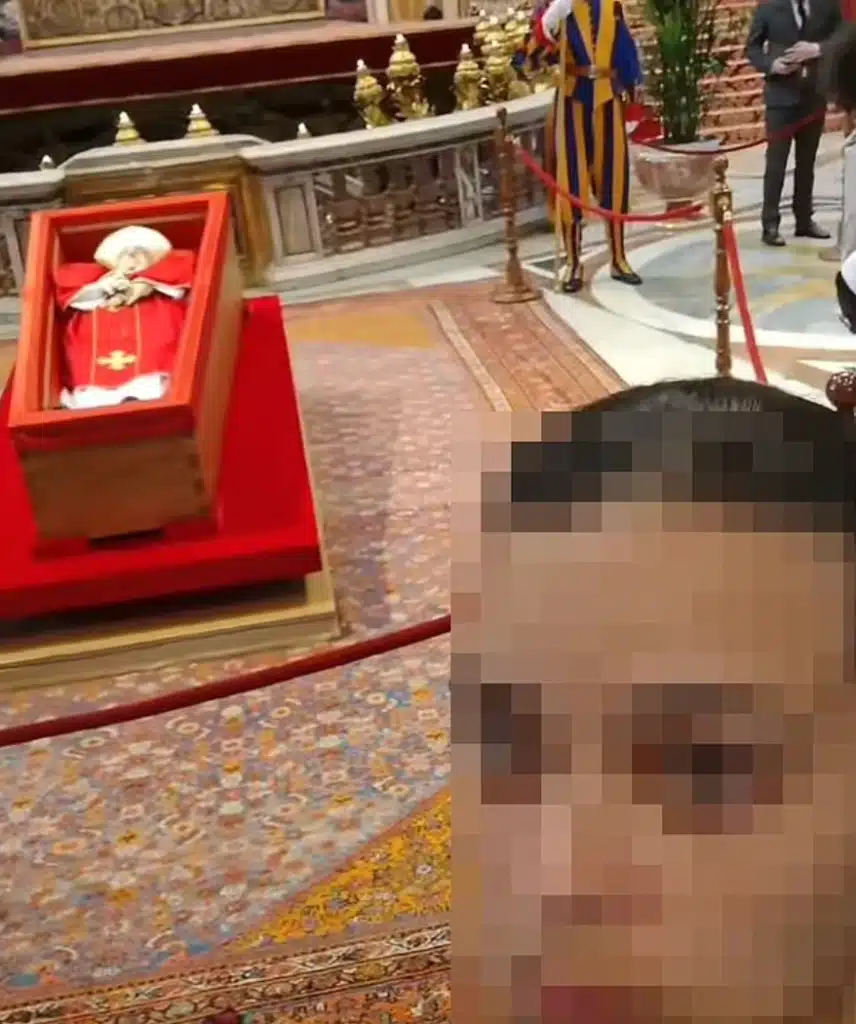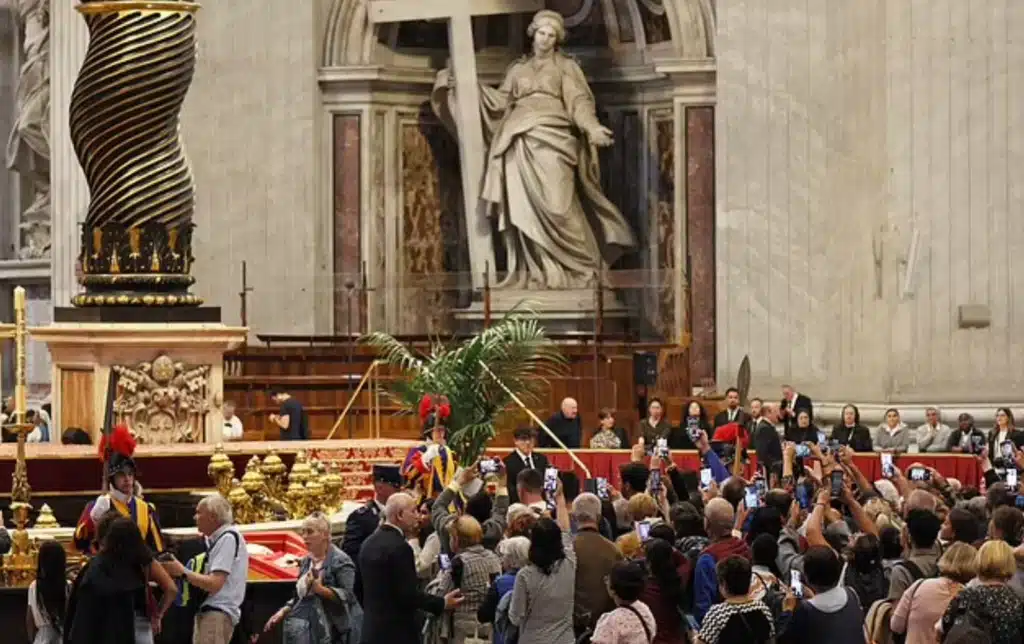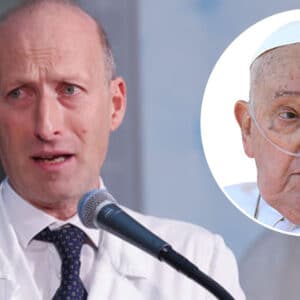As thousands flocked to Vatican City to bid farewell to Pope Francis, controversy erupted online over mourners taking selfies beside the late pontiff’s open casket.
Following Pope Francis’ death at age 88 on Easter Monday, his body was moved to St. Peter’s Basilica, where it will lie in state for three days before his funeral on Saturday. Over 50,000 people have already visited to pay their respects. While many approached in solemn reverence, others took the sacred occasion as an opportunity for selfies, sparking widespread criticism.
One image, now viral on Instagram, captures a smiling woman posing for the camera, clearly featuring the Pope’s body—clad in his red papal robes and white mitre, rosary in hand—visible behind her. The Pope’s simple wooden coffin lies on an elevated platform, surrounded by mourners and numerous smartphones.
Though photography wasn’t officially banned by the Vatican, security guards actively discouraged people from taking photos, particularly selfies.
“It was a bit in poor taste,” said Janine Venables, 53, from Pontypridd, South Wales, speaking to the Daily Mail. “Earlier, we were told no photos in the Sistine Chapel. But here, people had their phones out, taking selfies with the coffin. I’m surprised no one stopped them.”
Her husband, Paul Taylor, shared the sentiment: “I asked someone in the queue what Pope Francis would have thought, and they said, ‘He’d probably tell you not to waste time here, go help someone in need.’ And they were probably right.”
An anonymous Vatican source also expressed concern, saying, “It would be good if people could remember where they are and show some respect, but there’s only so much we can do.”
For many visitors, the solemn experience was overshadowed by the persistent flashes of cameras and noise from social media postings. “We kept our phones in our pockets the whole time,” one woman noted. “It was sad to see such disrespectful behaviour. It ruined what should’ve been a moment of quiet reflection.”
Official Vatican images showed large crowds around the coffin, many raising their phones—and even selfie sticks—to capture photos. Remarkably, even nuns were seen photographing the Pope, underscoring the pervasive nature of phone culture, even during sacred rites.
Despite initial announcements that the basilica would close at midnight, doors remained open throughout the night to accommodate swelling crowds. By late Wednesday, visitors reported wait times of up to five hours.
Prominent figures paying respects included Italian Prime Minister Giorgia Meloni, who earlier praised the Pope’s courage and warmth, recalling his advice: “Never lose your sense of humour.”
Security measures around Vatican City have intensified ahead of Saturday’s funeral, with increased police patrols, bag checks, and strict crowd control in place. International leaders attending will include the Prince of Wales (representing King Charles), British Prime Minister Sir Keir Starmer, U.S. President Donald Trump, French President Emmanuel Macron, Ukrainian President Volodymyr Zelensky, and Irish leaders Micheál Martin and Michael D. Higgins.
Breaking with tradition, Pope Francis will not be buried at St. Peter’s Basilica but at the Basilica of St. Mary Major in Rome, fulfilling his personal request.
His funeral initiates the nine-day mourning period called novemdiales, lasting until May 4. The conclave to elect his successor will occur 15 to 20 days following his death, with 135 cardinals eligible to vote.
Pope Francis’ 12-year papacy was characterized by humility, advocacy for the poor, and progressive ideals, widely admired but also drawing conservative criticism.
In his final public appearance on Easter Sunday, Pope Francis rode through St. Peter’s Square, blessing crowds and kissing babies despite visible fatigue and medical advice to rest.
As the Church transitions into its next chapter, faithful worldwide remember Pope Francis as a deeply human leader who consistently emphasized compassion and humility.







